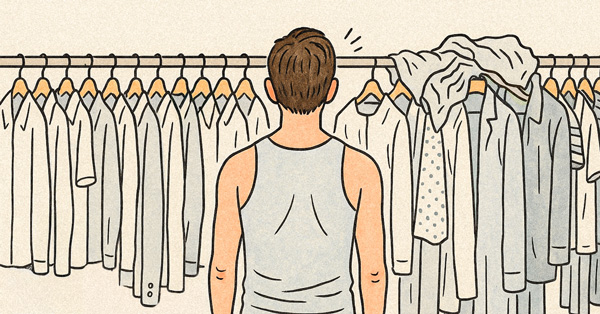This is Part 2 of the Transplant Trap Miniseries, a three part guide to helping you build a better life in a big city. Check out Part 1.
There’s no denying that one of the big city’s most alluring features is the bustling social life that’s constantly buzzing throughout it. Thanks to shows like Entourage we’ve all been given glamorous insights into Hollywood’s nightlife scene where scantily clad women frolic about rooftop pools and expensive bottles of champagne are passed back and forth between expensive looking people. We’ve heard the tales of roving underground dinner parties helmed by world class chefs and we’ve read the articles in Esquire about trendy speakeasies with hidden armoire entrances where hipster burlesque dancers perform cabaret to the accompaniment of a live rock band. Extravagance, chaos and a whole lot of fun.
And we’re happy to report, that yes, it’s all true.
But for some reason, many people who move to a big city think that simply plopping down, smack dab in the center of it all is enough to grant them entry to this treasure trove of social opportunities. That once they’re here, they can sit back and watch as the invites start pouring in. Boy does this make for a sad reality when instead, come Friday night they find themselves saddled up with their 5th consecutive episode of Storage Wars as the unadulterated awesomeness is playing out all around them – just out of reach.
But we’re not entirely to blame for this mindset. Growing up, we’ve been taught that friendships form naturally and the subsequent social lives inevitably spring up around them. And then that premise is only reinforced in summer camp, high school and college where making a new pal is as simple as sharing your favorite Power Ranger pog or holding a dude’s feet while he attempts to break his PR at the keg stand. Problem is, the moment we finally step foot into a city, all of that changes. Though this unique urban environment certainly –and frequently– churns out some fantastic social opportunities, it’s also one of the hardest places to make friends and build a decent network.
In Part 2 of this series, we’re going to show you how to build such a sprawling network from scratch that you’ll be catching so many invites to awesome shindigs, the hard part isn’t going to be figuring out what things are happening, but deciding which one’s you’ve got the time to attend.
The Sandlot Paradigm
There he is standing in left field, glove raised high in the air, eyes closed tight. “Please, catch it. Please, catch it. Please, catch it.” Thwack.
The passive approach that Smalls takes to catching his first baseball at the sandlot isn’t much different from the one that eventually lands him a coveted spot in the tight knit dude crew of PF Flyer-wearing misfits. Now we won’t go as far as to say that he was entirely without initiative in his efforts to become part of the gang, but there’s no denying that Smalls relied heavily on the hard work of one –Sir Benjamin Rodriguez– to pretty much build his entire social circle when he first found himself floundering about in a new town that fateful summer.
Now, whether it be Sandlot or any other fish-out-of-water-flick from our childhood, we’ve been taught over and again that for the most part, we can just sit back and let our social networks come to us. That as long as we make a mild effort to meet one or two people, things will all come together.
Well, hate to break it to you but unfortunately, this isn’t the 60s and there won’t be any man-eating dogs stealing baseballs from you and your friends. Despite what you may have heard, life in a big city is not like a movie and there certainly ain’t no base-stealing badass who has a soft spot for nerdy kids with no social skills. Quite the opposite, as a matter of fact. Instead, when he’s not busy chasing his rockabilly modeling career for Palmade, big city Benny-the-Jet is going to spend his free time booty calling Wendy Peffercorn, going to swanky parties and working on his memoir, not helping you make friends. Sorry Smalls, but here in the city, you’ve got bigger problems than pickling The Beast.
The reality is, within the social landscape of the big city, building the type of bustling social life that we’re after simply is not a passive process and you most certainly can’t rely on someone else who is already well connected to do all of the hard work for you. It requires careful, calculated and deliberate action.
Enter: The Acquaintance Cushion
But before you can start building a network that regularly generates invites to awesome events and introductions to awesome people, you've got to architect the proper infrastructure to support it. A foundation upon which you can grow and evolve your social reach. The launch pad that will give you access to a number of high value people in a short period of time.
Meet the Acquaintance Cushion –a fluffy buffer of semi-friends, and your most valuable asset when it comes to growing a network from scratch.
You see, rather than spending precious time trying to foster deep relationships with carefully vetted social candidates, the Acquaintance Cushion grants you rapid exposure to a larger audience from which you can –in due time– pluck the cream of the crop and eventually integrate into your close core of buddies. Because when you make the mistake of putting the cart before the horse (focusing on close friendships first), you not only castrate your social reach and “invite capital” (how likely you are to get invited to events), but you’ll find yourself stuck in social limbo for years until you inevitably stumble upon –and settling for– a lukewarm group of buddies. The Acquaintance Cushion allows you to bypass all of that so you can jumpstart your social growth with a bang.
Now there are plenty of ways that you can go about it, but there’s one strategy in particular that we’ve developed for quickly building a cluster of acquaintances from ground zero, and that strategy is Community Crashing.
The Mini-Community: Where to Find Your Next 30 friends
Mini-communities are simply medium-to-large sized niche networks that develop around specific topics, hobbies or interests and they’re one of the easiest ways to meet a bunch of new people who share similar interests, with very little effort, in an extremely short period of time. Now, we’re not exactly talking about your average book club or knitting group. In cities, you’ll find everything from adult dodgeball leagues and renegade bicycle crews to improv comedy classes and mixology workshops. Seriously, just Google some combination of the following: [interest] + [city] + [group/meet-up/club]. And on top of that, they’re also the perfect place to brush up on your social skills so that by the time you’re out rubbing elbows with that pretty lady at the bar, your banter game is smoother than Vince Vaughn in Swingers.
Now, finding and joining a mini-community is one thing, but if you want to actually have any success with converting these efforts into an event generating Acquaintance Cushion, you’ve got to ensure that you make a bit more than a milquetoast effort because sitting in the corner and playing Angry Birds for the next 45 minutes just ain’t going to do the trick.
That said, we understand that it’s a bit of an awkward and unnatural process so feel free to follow this simple 3-step guide:
Step 1: Talk to Everyone, But Target the Performers
Most mini-community events and meetups are sure to be strewn with unfamiliar faces, so who do you talk to first? Where should you focus your efforts?
Truthfully, it doesn’t really matter at this point. Remember, we’re not exactly shooting for the stars just yet, we’re simply trying to nab a few new Facebook friends, so be open to talk to pretty much anyone. That said, keep your eyes peeled for people who seem to be the leaders of the group. They’ll be the ones making introductions and actively mingling about the room. If you can, meet them first. Not only will you build a little social proof (ie. their stamp of approval), but they’ll most likely be able to introduce you to whoever else you want to meet.
Step 2: Break the Ice – But Do It Quietly
Having the conversation is easy, it’s getting into it that’s usually the painful part.
Your best move is to avoid the one-on-one conversations and target larger groups of about 4-8 people. Not only does this allow you to get all ninja and sneak into the conversation without drawing too much attention to yourself, but it also gives you the opportunity to participate at your own pace. Our strategy is to avoid the limelight at first and then to slowly toss in comments to support the current discussion as you feel comfortable. This way, you won’t be pressured to perform or carry the conversation like you might in smaller groups.
Step 3: Seal the Deal
But being a peripheral part of a large group isn’t exactly the end game. What comes next?
Inevitably, every group disperses. At this point, you’ve had an opportunity to get a feel for the different people in the group and have probably decided who you’d like to pursue. When people start to break away, you’re free to go in for the one-on-one without the awkwardness that usually comes with a completely cold approach. Easy breezy.
From here, you’ll probably chit chat about the new season of Game of Thrones or perhaps the probability of a Kobe comeback, inevitably leading you to a bright, shiny, new acquaintance. A job well done, my friend.
Now don’t get us wrong, it doesn’t have to happen exactly like this each and every time. Part of being a socially savvy individual is having the ability to roll with the punches and to adapt or recalibrate as you go. But simply having a game plan to follow and a structure to work from can be a surprisingly valuable, and undeniably comforting asset to have in your back pocket as you get started with building your very own sprawling social network. Now wash, rinse and repeat and you’ll find yourself with 30 new friends in no time.
For a more detailed breakdown of how you can quickly grow a social network from scratch –including exactly what to DO and SAY once you get into these conversations – get The Denizen Society's free Transplant Trap Minicourse HERE.

















